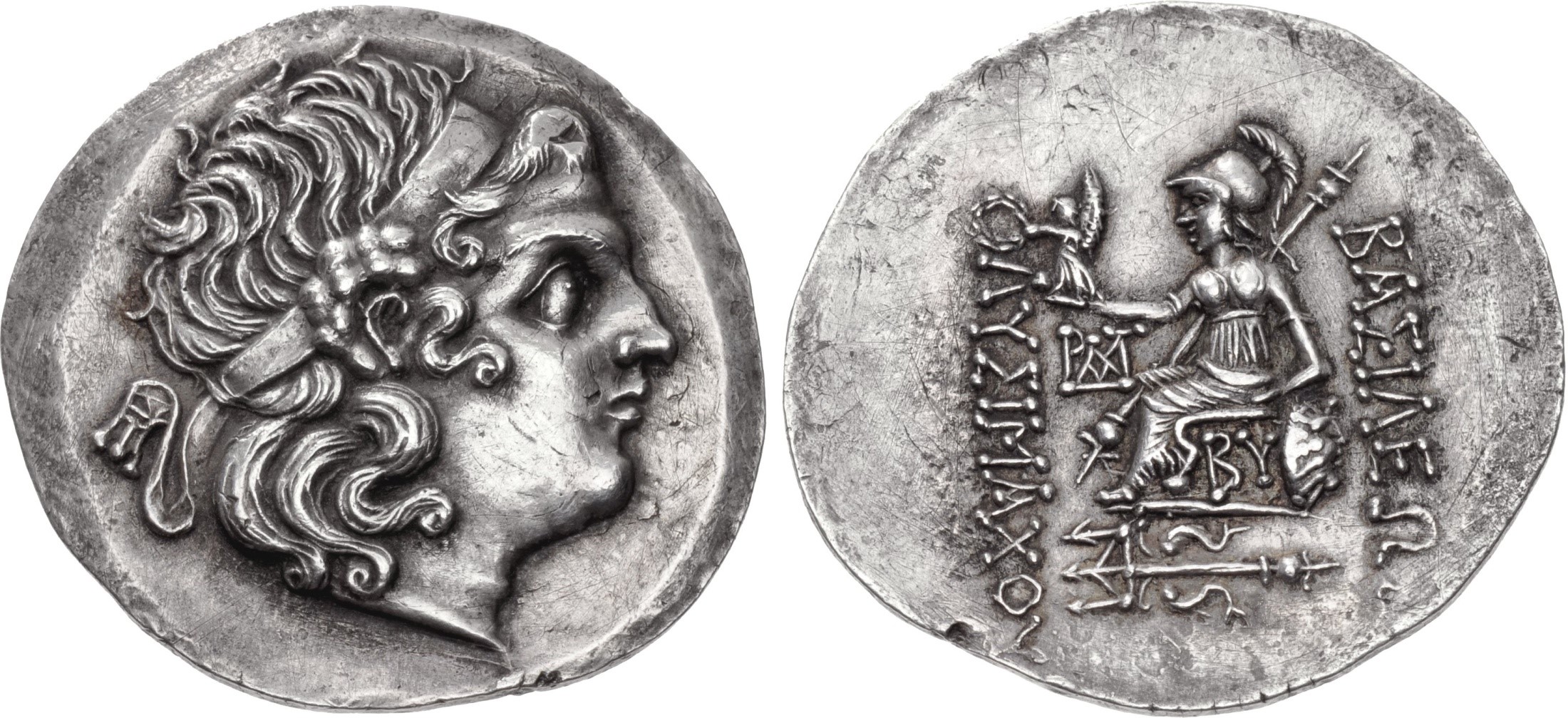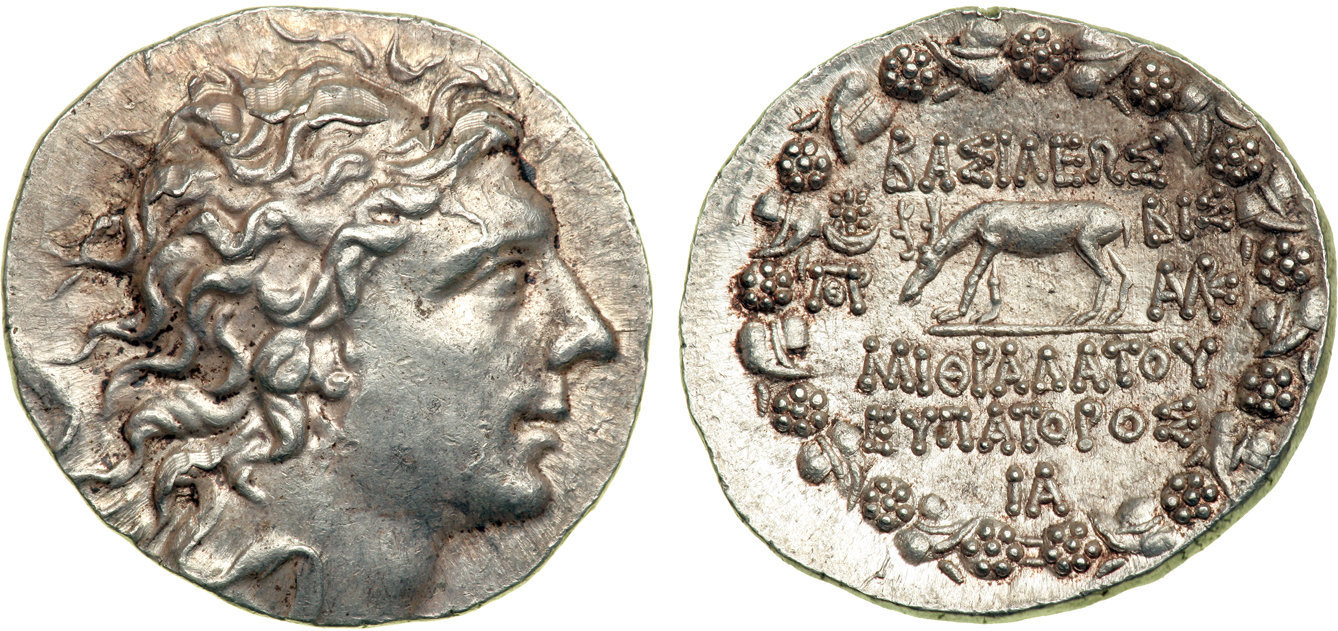|
|
| Line 34: |
Line 34: |
| |Frequency of overstrikes=exceptional | | |Frequency of overstrikes=exceptional |
| |Level of confidence=sure | | |Level of confidence=sure |
| | |Remarks=Unique so far. |
| }} | | }} |
Revision as of 09:21, 28 February 2022
85 - 70 | ΒΑΣΙΛΕΩΣ ΛYΣΙΜΑΧΟY
Overstriking coin
Byzantium on Mithridates Eupator - Classical Numismatic Group,93,22 May 2013,101.jpg
Overstruck variety
Byzantium on Mithridates Eupator - Classical Numismatic Group,93,22 May 2013,101 overstruck variety.jpg
|
|
Sale(s)Sale(s) ᵖ:
|
Classical Numismatic Group, 93, 22 May 2013, 101
|
|
|
|
Description
| ObverseInscription or printing placed on the obverse.:
|
Diademed head of the deified Alexander right, with horn of Ammon
|
ReverseInscription or printing placed on the reverse.:
|
ΒΑΣΙΛΕΩΣ ΛYΣΙΜΑΧΟY (Greek) Athena Nikephoros seated left, left arm resting on shield, transverse spear in background, monogram to inner left, BY below throne, ornate trident in exergue
|
Mint and issuing power
| MintIdentifies the place of manufacture or issue of a numismatic object.:
|
Byzantium
|
Ancient regionAncient region.
|
Thrace
|
Modern countryModern country: Turkey
|
AuthorityIdentifies the issuing power. The authority can be "pretended" when the name or the portrait of X is on the coin but he/she was not the issuing power. It can also be "uncertain" when there is no mention of X on the coin but he/she was the issuing power according to the historical sources:
|
|
Chronology
| FromIdentifies the initial date in a range assigned in a numismatic context. 85 toIdentifies the final date in a range assigned in a numismatic context.. 70
|
Hellenistic 323-30 BC  periodTime period of the numismatic object. periodTime period of the numismatic object.
|
Physical description
MetalThe physical material (usually metal) from which an object is made.: Silver 
|
WeightWeight of the numismatic object (in grams). in grams: 16.2616.26 g <br />16,260 mg <br />
|
DenominationTerm indicating the value of a numismatic object. Examples: tetradrachm, chalkous, denarius.: Tetradrachm
|
AxisDescribes the directional relationship between the obverse and reverse of a numismatic object.: 1212 mm <br />1.2 cm <br />
|
| DiameterDescribes diameter of an object (in mm).: 3636 mm <br />3.6 cm <br />
|
StandardStandard.: Attic
|
References
Description
| ObverseInscription or printing placed on the obverse.:
|
Diademed head right
|
ReverseInscription or printing placed on the reverse.:
|
BAΣIΛEΩΣ MIΘPAΔATOY EYΠATOPOΣ (Greek) Stag grazing left, to left, star-in-crescent above monogram, to right, (date) above monogram, (month) in exergue, all within Dionysiac wreath of ivy and fruit
|
Mint and issuing power
Chronology
| FromIdentifies the initial date in a range assigned in a numismatic context. 96 toIdentifies the final date in a range assigned in a numismatic context.. 80
|
Hellenistic 323-30 BC  periodTime period of the numismatic object. periodTime period of the numismatic object.
|
Physical description
| DenominationTerm indicating the value of a numismatic object. Examples: tetradrachm, chalkous, denarius. ᵖ:
|
Tetradrachm
|
StandardStandard. ᵖ:
|
Attic
|
References
References
- a b Callataÿ, François de (1997), L'histoire des guerres mithridatiques vue par les monnaies, Numismatica Lovaniensia 18, Louvain-la-Neuve, XIII + 481 p. et 54 pl.
- ^ Callataÿ, François de (2013), “Byzantion over Mithradates Eupator. How the Pontic king paid his Thracian mercenaries after the treaty of Dardanos”, Notae Numismaticae (Krakow), 8, p. 95-104.

